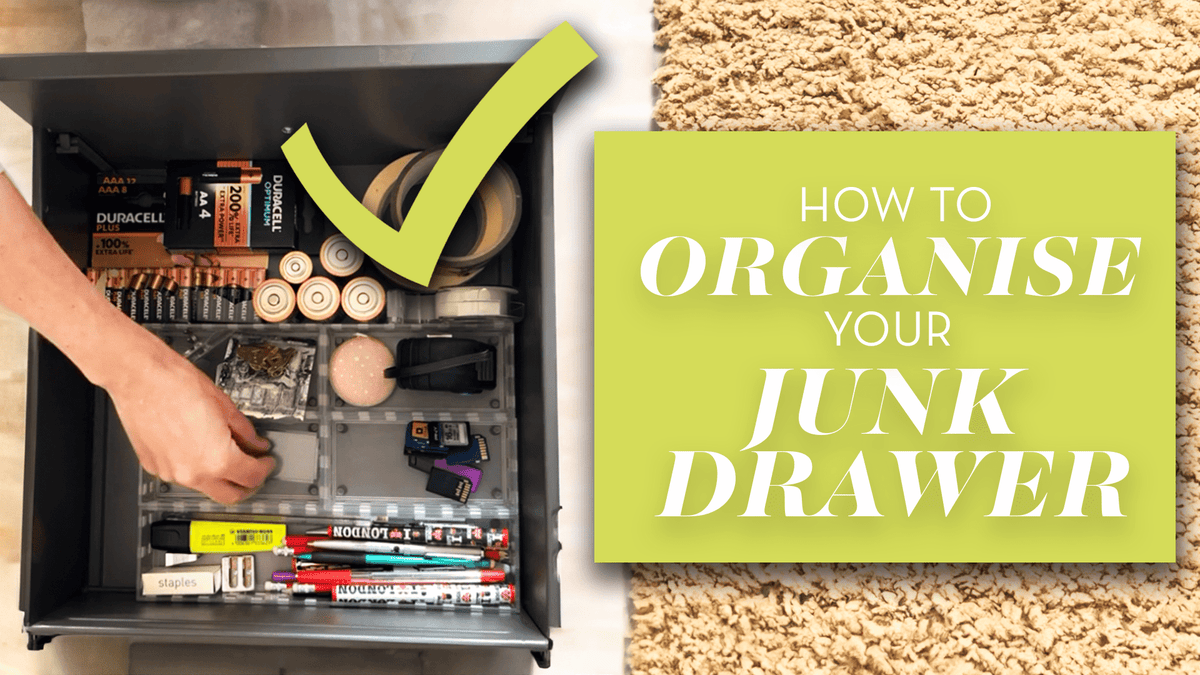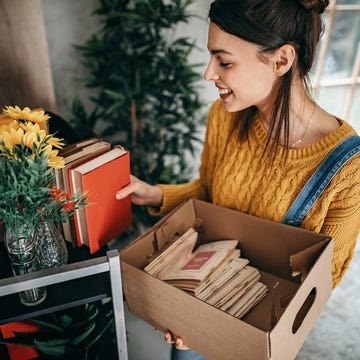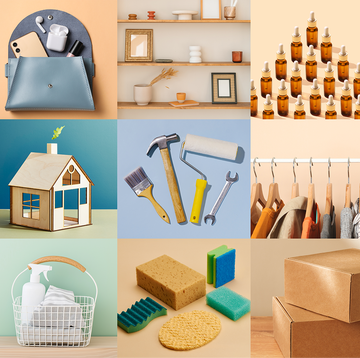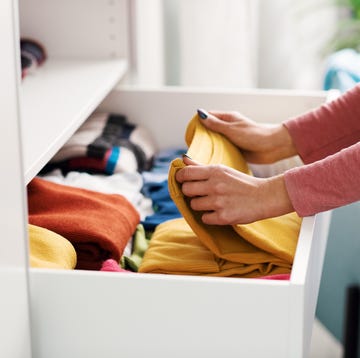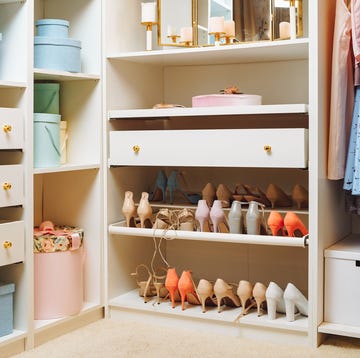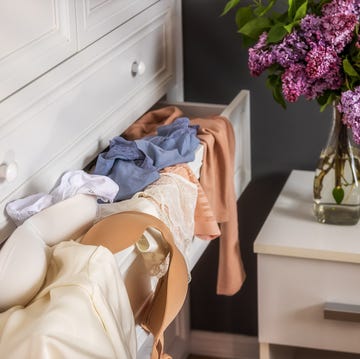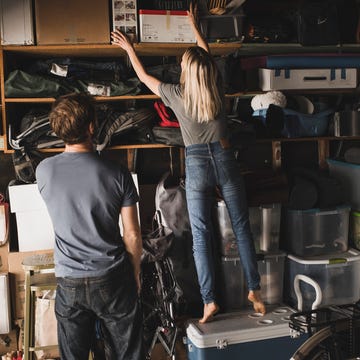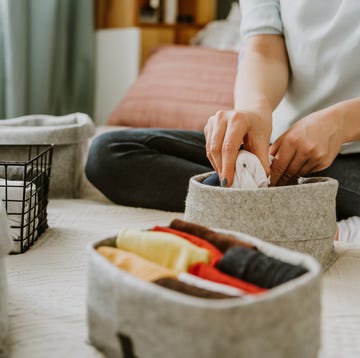Our handbags hold everything we could possibly need. Keys, money, phone, glasses, medicine and tissues… you name it. But as more and more items find their way in, things inevitably get crowded. Before you know it, you’re digging around just to find your keys.
Handbags shouldn’t be this busy. You should know exactly what you’re carrying and where to find it for a smoother life. Otherwise, it causes stress when you can’t find what you’re looking for, or annoyance when you realise you’ve inadvertently left something at home.
Thankfully, handbags are relatively small spaces and it only takes a few minutes to declutter them. If you want some guidance, we’ve found 10 things you can declutter to get you started:
1. Rogue tissues
No one likes sorting through their old tissues, but it needs to be done. As used tissues are chucked back in our bags, they soon bulk up and take over spare pockets and compartments. It’s pretty gross to be carrying this around for longer than necessary, so set aside a few moments every day to empty them out, especially where you’re suffering from a cold or allergies.
If you don’t want the ‘residue’ to spread to your bag, it’s worth keeping a dedicated small fabric bag that can hold the tissues until you find a bin. This can be machine-washed when the time comes. A handkerchief is a more sustainable alternative to loose tissues, but you will need to keep on top of washing it.
Don’t forget about clean tissues, too. I have a terrible habit of collecting paper napkins wherever I go, ‘just in case’. But this soon mounts up and creates a mess of its own. Only carry what you need, and store it neatly so it doesn’t overtake your bag.
2. Receipts
Receipts will clutter up most handbags. They’re handed out wherever we make a purchase and they’re chucked into our bags without a second thought. It’s only when we paw through them to find what we need, that we realise we have a problem.
Take all your receipts out and sort through them to find any you need to keep; e.g. for returns and warranties. Those you need to hang on to should be stacked and stored together in a dedicated space at home so you can’t lose them; I keep mine in a marked envelope so the mess isn’t transferred to my drawers. Just remember, you’ll need to sort through them again periodically to remove those you no longer need.
Many receipts are printed on thermal paper and contain Bisphenol A (BPA) or Bisphenol S (BPS), which means they can’t be recycled. So the remainder should by thrown out with your household waste. Going forward, try to request a digital receipt via email if possible instead or if it’s something you don’t need a receipt for (such as a morning coffee), say so at the till.
3. Headphone wires
You might think wired headphones are dated, but plenty of us still use them, myself included! When these are tossed in a handbag, they turn into a tangled nightmare. As you try to remove them, they catch on other items and pull things out and even once you’ve removed them, you’re gradually untangling them at such a rate that it feels embarrassing.
A headphone wire organiser, such as this one from SITAKE, can help here. This keeps the wire wound and controlled, so it can’t tangle up in your bag. These can come in handy for wrapping your charging cables at home, too.
4. Medicine
It’s sensible to carry medicine you might need, such as paracetamol, and emergency medicine, such as inhalers, is a must – but you don’t need full packets of everyday medicine creating a mini pharmacy in your handbag.
Take stock of what you’ve got stored in your bag and consider when you last needed it. When I last looked, I was still carrying throat sweets from a previous cold! Check the expiry dates while you’re here; this shows just how old it is, and whether it needs to be disposed of via your local pharmacy.
For the medicine you want to keep, you can cut away a lesser amount to carry; just think; you will only need enough to get home, or to your nearest pharmacy. But remember to mark the expiry date on them if you cut that away. It’s easier to lose the medicine in your bag when you’re carrying less, so pop them in a dedicated pouch to keep them together and save them from being accidentally pierced.
5. Makeup
Between all of our makeup essentials and the different shades of lipstick, eyeshadow and blush we might need, our handbag can become its own portable makeup counter. With time, more items get added and a lipstick you have no intention of using any time soon goes everywhere with you.
Your handbag should be reserved only for makeup you use on a regular basis and securely stored to prevent spills. A makeup bag is handy for large tote bags that lack compartments.
Keep in mind that makeup has an expiry date, too. Look for the ‘period after opening’ logo – a symbol of an open pot to show how many months it has to use once opened. After this, it might not perform as it should and could encourage irritations and infections.
6. Loyalty cards
Every shop has its own loyalty card these days. Between the points and rewards, they’re a useful addition to your bag. But, the more cards you have, the bigger the card holder you need. And if your purse needs to go up a size, it ends up adding a lot more weight to your bag.
Many loyalty cards can be stored on your phone via your digital wallet, so you don’t need to carry these around. For any you can’t upload, but seldom use, keep these together at home with a dedicated card holder. That way, you can find it when needed.
7. Pens
Who can say no to a free pen? The trouble is, you can end harbouring several in your bag, which can leak and lead to ink stains. You only need one dedicated pen in your bag, and ideally it should be sealed and not ‘clickable’ to prevent accidents. It should also be stored upright (with the tip up) and not have anything stacked on top to put pressure on it.
8. Sweets
Sweets are always handy to carry around for the kids. But, you don’t want sticky loose sweets picking up fluff from the bottom of your bag. You also don’t want to carry any half-eaten snacks around either, for risk of crumbs and smells transferring to your bag.
Make sure your sweets and mints are well sealed once opened; a sweet dispenser or small container can help with this. For anything larger that’s likely to leave crumbs, such as rice cakes or crisps, use a bag clip to keep them sealed. If there’s room, you could use a collapsable silicone container to keep any smells and crumbs contained. Remember to decant any larger snacks – consider if you’re likely to eat them all before returning home.
9. Sanitary products
Of course, you need to carry sanitary products, but these shouldn’t be exploding out of their wrappers or bulging from your zipped compartment! You should only take as many sanitary products as you’ll need for that day – maybe one extra for emergency cases – and then restock once you’re back at home.
Make sure your sanitary products are used and rotated. Tampons will have expiration dates (usually 5 years) printed on the pack that you can’t exceed. After this, bacteria and even mould can grow on them. According to Trade To Aid, sanitary pads have a typical shelf life of 3-5 years, as the materials will eventually deteriorate.
Likewise, you shouldn’t use any sanitary products that have torn out of their wrappers. This exposes it to bacteria and residue in your bag, which you don’t want to transfer to your body. For this reason, you should avoid storing anything sharp or particularly dirty among your sanitary products, such as keys. You can store them in a dedicated pouch to protect them. Tins are also available for sanitary pads.
10. Keys
Speaking of keys, these are in pretty much every handbag. The question you need to ask yourself is: do you need all of them? Many of us carry keys that we don’t use day-to-day, such as window keys and backdoor keys. Lots of unneeded keys can add quite a bit of weight and just cause confusion when the time finally comes to open your front door.
Remove any keys that aren’t necessary and store them safely and securely on a keyring at home instead. Don’t remove any keys that you might require in an emergency, such as parents’ keys. Instead, use a key organiser to keep them contained and to stop them from damaging other items in your bag.









